
views
Making and Applying a Natural Moisturizer
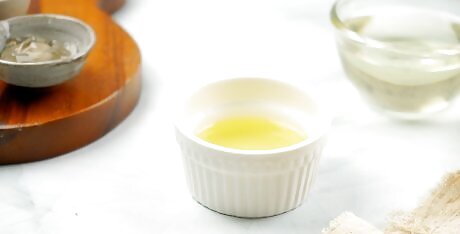
Select an oil. Choose a natural oil that your dry skin can absorb easily. Try to choose an organic oil that hasn't been produced using any artificial chemicals. Place 6 tablespoons (about 90 ml) of an oil of your choice into a mixing bowl. Consider using: Coconut oil: a light oil with antibacterial properties. Always used unrefined, virgin coconut oil for skincare. Jojoba oil: a liquid extracted from the jojoba seed that's quickly absorbed by the skin. Shea butter: a thick cream for very dry skin. Argan oil: a light oil that fights inflammation. Olive oil is also a great option.
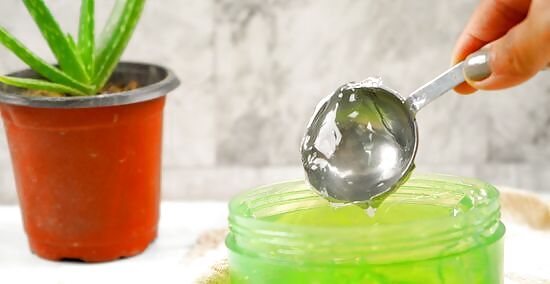
Add aloe vera gel. Measure out 1 tablespoon (15 ml) of aloe vera gel into the mixing bowl with the oil. If you want to use aloe vera gel directly from the plant, score a piece of aloe vera using a knife. Peel away the sides to reveal the cool gel in the middle of the piece. Squeeze or scrape this into your measuring spoon. Or, buy an aloe vera gel that contains few additives. Some early studies show that aloe vera may be effective in treating dry skin.
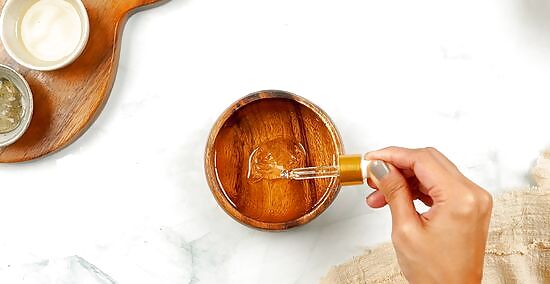
Add an essential oil. If you want to add a nice fragrance to your natural moisturizer, add 4 to 5 drops of essential oil to your mixing bowl. Essential oils won't necessarily add moisture to your face, but many have antimicrobial, anti-inflammatory, and antifungal properties which could help clear up skin irritation. Essential oils with benefits to the skin include: Lavender oil, which reduces skin irritation and has antibacterial properties that may promote healing of cuts and scrapes. Geranium oil, which can help condition your skin and balance out your skin’s natural oil production. Lemongrass oil, which helps tone and tighten skin. Tea tree oil, which has antibacterial and antifungal properties. Chamomile oil, which can calm inflamed or irritated skin.
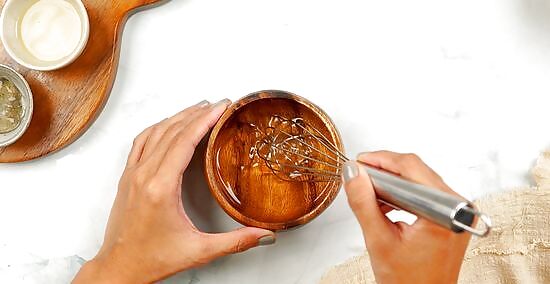
Combine your moisturizer. Once your carrier oil, your aloe vera gel, and your essential oils are in your bowl, whisk the mixture. The moisturizer should be completely smooth and combined so that no oil sits on the top. You can also use a handheld electric mixer to combine your moisturizer.
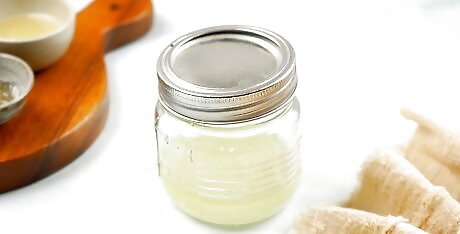
Store your moisturizer. Pour your moisturizer into a clean and sterilized glass jar with an airtight lid. Screw the top on and refrigerate the moisturizer. Since there are no preservatives in the moisturizer, you'll need to use it within a few days. If you find that you don't go through very much moisturizer, consider making half of the recipe so you aren't throwing it out after several days.

Apply the moisturizer. Scoop out a pea-sized amount of your natural moisturizer using your fingertips. Dot the moisturizer around your face and then use your fingertips to gently rub the moisturizer into your skin. Try to moisturize after cleansing your face so that your face retains the most moisture, and you aren’t massaging dirt and impurities into your skin along with the moisturizer.
Making and Applying Face Masks
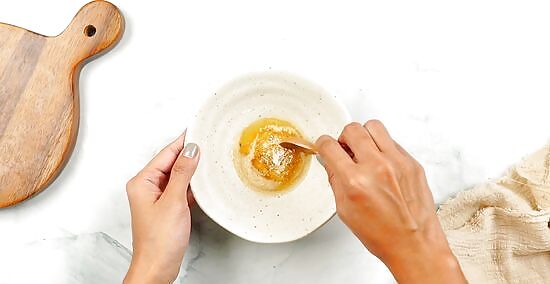
Make an oatmeal-fennel mask. Grind a few tablespoons (45-75 ml) of oatmeal in a blender until you have a powder. In a separate bowl, steep 1 tablespoon of fennel seeds in 1/2 cup of boiling water for 10 minutes. Strain and discard the fennel seeds. Mix together 1 tablespoon (15 ml) of the cooled fennel tea with 1 tablespoon (15 ml) of the ground oatmeal powder and 1 tablespoon (15 ml) of honey. Fennel is great for preventing wrinkles and moisturizing normal skin. Oatmeal can help slough off dry dead skin.
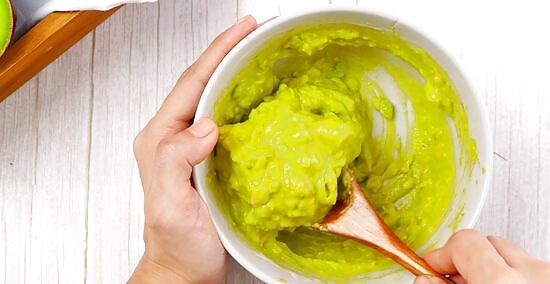
Mix up an avocado mask. Mash up half of a ripe avocado in a bowl until it's completely smooth. Stir in 1 tablespoon (15 ml) of plain yogurt and 1 tablespoon (15 ml) of pure honey until they're completely combined with the avocado. The mixture should be a pasty consistency. The natural oils in the avocado can replenish your skin's oils and hydrate your face.
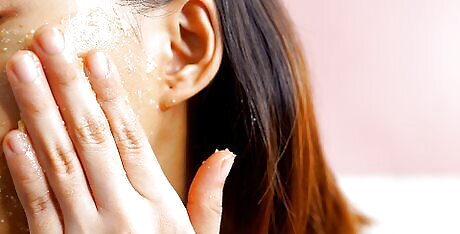
Apply a face mask. Take one of your face masks and scoop out a large dollop of the moisturizing mixture. Spread the mixture on your clean face. You can either use your fingers or a clean makeup brush to evenly coat your face with the mask. Avoid applying a face mask to your eye area and avoid covering your lips. Fan brushes are great for applying face masks evenly and precisely.

Let the mask set. Depending on what natural ingredients you used, your mask may begin to dry out quickly or remain wet and lotion-like. If you're using the oatmeal-fennel mask, leave the mask on your face for 20 minutes. If you're using the avocado mask, let it set for 10 to 15 minutes. Most moisturizing masks won't dry out as much as facial masks designed for oily skin. If your skin seems irritated or begins to dry out, remove the mask immediately.
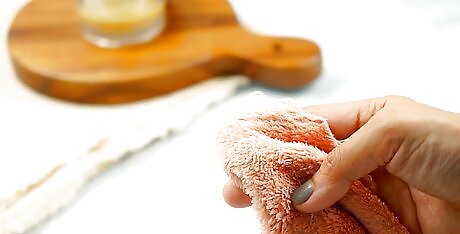
Rinse off the mask. Use tepid water to gently wash off the mask using your fingertips. If you're having trouble getting the mask to wash off, use a very soft clean cloth that's moistened with warm water. Once you've gotten most of the mask off, rinse your face with cool water. You can apply a moisturizing mask a few times a week to keep your face hydrated.
Using Home Remedies
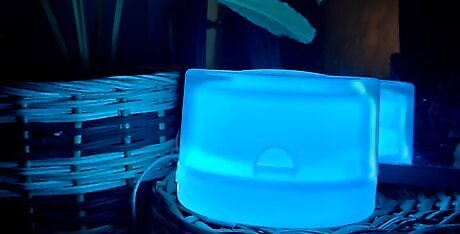
Run a humidifier at night. If you wake up to dry skin because you live in a dry climate, your skin may need extra moisture in the air. Try running a humidifier that releases moist air into your room at night. While moist air can hydrate your skin, avoid hot steamy showers. The hot water can remove your skin's oils and dry out your skin even more.

Switch your moisturizers. Since you can easily control what oils you use when you make your own moisturizers, you can adjust your moisturizer as the season's change. If you find that your natural moisturizer isn't keeping your skin hydrated through a very dry winter, try swapping the oil you're using for a thicker one (like shea or cocoa butter). Remember to switch back to a lighter oil when the seasons change and the temperatures rise.
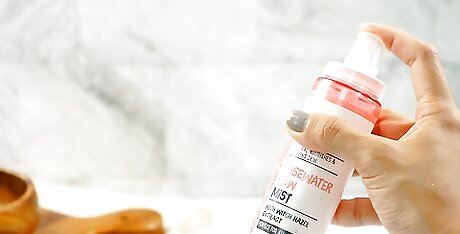
Use an herbal spritzer. Carry an herbal spritzer to spray on your face whenever your skin feels dry. To make a spritzer, mix a few drops of your favorite essential oil into a spray bottle filled with distilled water. Screw on the nozzle and shake to combine the oil. Try using rose, sandalwood or bergamot essential oils, which can keep your skin hydrated.
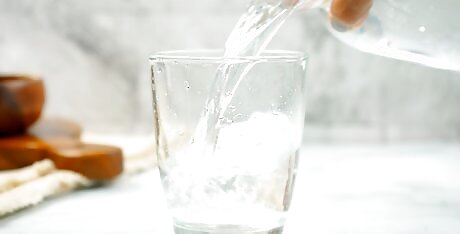
Drink water. To keep your skin hydrated, you need to be drinking at least 6 to 8 8-ounce (180 ml) glasses of water every day. This will help improve the look of your skin and keep it from drying out. Remember that you can also get water from eating fresh fruits and vegetables. If you struggle to remember to drink water, you can also drink herbal teas, juices, and milk.

Get some exercise. Working out improves circulation in your skin, and breaking a sweat helps distribute your skin’s natural oils. Try to get at least 30 minutes of physical activity every day. Just make sure to rinse off after a workout, since sweat can irritate your skin when it dries out.


















Comments
0 comment